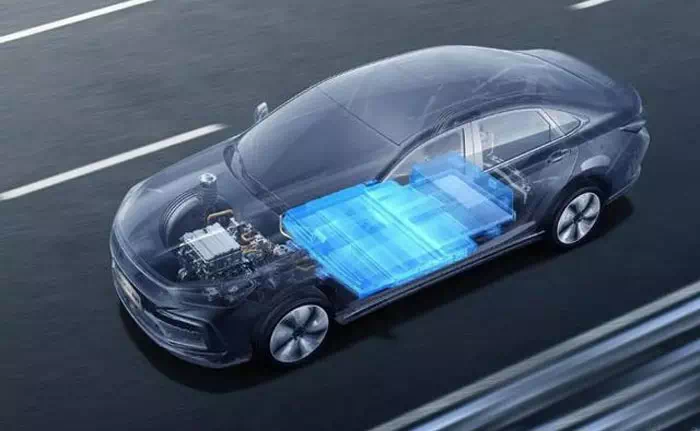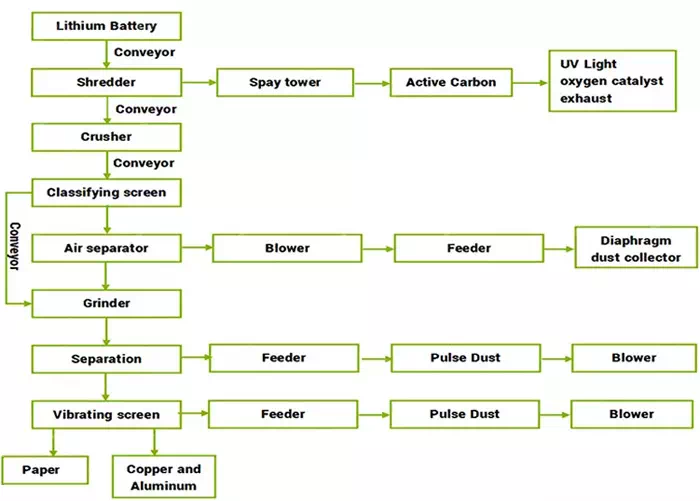How To Deal With Used Car Lithium-Ion Batteries?
At present, electric vehicles, as a new energy means of transportation, are closely related to our lives. But the "hidden danger" behind this is not small. Take battery recycling as an example. According to statistics, last year alone, the total amount of discarded vehicle batteries in the world was as high as 100,000 tons, which is not a small number.
Under the rising trend of battery raw materials, the regenerative value of rare metals such as nickel, cobalt, and manganese in electric vehicle batteries is prominent, and there are often severe price fluctuations due to the hot sale of electric vehicles. The circular economy of recycling and reuse can grasp the source of raw materials to ensure stable supply and thus stabilize market prices.

Automotive lithium battery
At present, there are two types of recycling and utilization of waste electric vehicle batteries in the world, cascade utilization and recycling.
The so-called cascade utilization is to continuously "degrade" the battery until the last trace of its value is drained. Therefore, many things you see in life may have its participation.
At present, the physical sorting of used batteries is mainly carried out in China by pyrolysis or mechanical disassembly. When passing through the proper recycling channels, the waste electric vehicles will basically have the following uses after they meet the conditions of echelon utilization after evaluation and judgment:
Large-capacity power battery packs are generally used to build energy storage devices such as solar power generation and wind power generation, which can reduce the cost of power generation to about 20% of the use of new lithium batteries.

Lithium battery recycling technology process
Power batteries with less capacity can be used for vehicles with low power and endurance requirements, such as golf carts, shuttles for commuting in parks, and AGVs for autonomous transportation in factories.
There are also some waste batteries that can be used for the construction of communication base stations. With the advancement of 5G technology, the density of 5G network base stations has increased year by year, which requires a large amount of power supply. The cascade utilization of power batteries just solves this problem.
If the battery is damaged or the remaining energy is insufficient, it needs to be recycled, and the valuable metals, electrolytes, plastics, etc. in the battery are recycled and re-made into raw materials for batteries or other products. A car lithium-ion battery can contain 8 kilograms of lithium, 35 kilograms of nickel, 20 kilograms of manganese, and 14 kilograms of cobalt, all of which are very valuable metal elements.
Lithium battery recycling and processing equipment is used as lithium iron phosphate battery, lithium cobalt oxide battery, lithium manganate battery, lithium battery processing, etc. Its function is to improve the recovery rate of lithium batteries, improve the sorting performance of lithium batteries, improve the recovery rate of copper, aluminum and precious metals in waste lithium batteries, and reduce the consumption of raw materials and environmental pollution.
The principle of lithium battery recycling and processing equipment: The lithium battery recycling and processing equipment shreds the shell of the raw material with a shredding device, and then shreds the shell to less than 10mm through a coarse shredder, then enters a particle pulverizer for peeling and pulverization, and then enters a micropowder classifier for separation processing. The tail ash is collected by the rear cyclone separator and pulse dust collector. The waste lithium battery positive and negative electrode sheet processing equipment is based on the structure of the positive and negative electrodes of the lithium battery and the material properties of its constituent materials, copper and carbon powder. The material is separated and recovered, and the complete set of equipment operates in a negative pressure state, without dust escaping, and the metal sorting effect is good.



